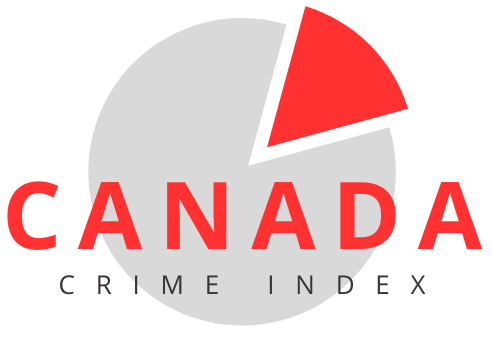In 2024, Saskatchewan will see significant changes to its minimum wage, impacting workers across the province.
The local government aims to provide the population with financial stability, especially low-income earners.
Since the local elections are coming, questions like “What is minimum wage in Saskatchewan” and “How high it will be in the future?” are extremely common again.
Let us talk about this subject.
1. Current Minimum Wage in Saskatchewan
As of October 1, 2023, Saskatchewan’s minimum wage stands at $14 per hour as was decided by the local government.
This rate places Saskatchewan among the provinces with a relatively lower minimum wage compared to others across Canada.
For instance, Newfoundland and Labrador and Nova Scotia currently have higher minimum wage rates, set at $16.55 and $15 per hour, respectively.
Saskatchewan’s lower rate reflects its historically moderate cost of living, but it also raises concerns about wage adequacy, particularly in the face of inflation and rising housing costs.

- The average house price in Saskatchewan was $301,352 in 2023 according to Statista, which is an increase from 2022 when it was $289,600.
- At the same time, the average rent in Saskatoon is $1,362 according to Zumper.
As we know, the minimum wage is particularly crucial for workers in retail and hospitality.
Many workers in these industries rely on this wage floor to make ends meet, making any changes to the minimum wage a significant factor in their financial planning.
The current rate, though an improvement over previous years, still leaves many workers in Saskatchewan struggling to cover basic expenses, highlighting the importance of the upcoming increase in 2024.
Now that we know the answer to “What is minimum wage in Saskatchewan?” we can go deeper into the subject.
2. Planned Increase to $15 per Hour
On October 1, 2024, Saskatchewan minimum wage is scheduled to increase to $15 per hour.
It is important to say that the fight for $15 per hour has lasted since 2017, as we can see in the report by the Canadian Centre for Policy Alternatives.
The increase is part of a broader trend across Canada, where provinces are raising their minimum wage rates to better align with the rising cost of living and inflation.
A planned increase in Saskatchewan is seen as a necessary adjustment to help workers cope with the province’s economic realities, including rising costs for housing, food, and other essentials.
The increase to $15 per hour will bring Saskatchewan closer to the rates seen in other provinces but will still leave it behind in provinces like Nunavut, where the minimum wage is $19 per hour.
However, the increase is a positive step for low-wage workers in Saskatchewan, providing them with a modest boost in income.

3. Historical Perspective
Saskatchewan minimum wage has seen a steady increase over the past few years, reflecting ongoing efforts to ensure that low-income workers are not left behind as the cost of living rises.
It looked like this:
| Jurisdiction | 2019 | 2020 | 2021 | 2022 |
|---|---|---|---|---|
| Saskatchewan | 01-Oct-19 $11.32 | 01-Oct-20 $11.45 | 01-Oct-21 $11.81 | 01-Oct-22 $13.00 |
This progression has been driven by a combination of factors, including:
- Inflation
- Pressure from labor groups
- Comparisons to minimum wage rates in other provinces
Since we know that comparing the Saskatchewan minimum wage with other provinces is always important, let’s check out their current rates:
| Province/Territory | Minimum Wage |
|---|---|
| Alberta | $15.00 |
| British Columbia | $17.40 |
| Manitoba | $15.30 |
| New Brunswick | $15.30 |
| Newfoundland & Labrador | $15.60 |
| Northwest Territories | $16.05 |
| Nova Scotia | $15.20 |
| Nunavut | $19.00 |
| Ontario | $16.55, increasing to $17.20 |
| Prince Edward Island | $15.00, increasing to $16.00 |
| Quebec | $15.75 |
| Yukon | $17.59 |
The ongoing adjustments reflect a broader trend toward ensuring that wages keep pace with the cost of living, though some argue that these increases are still insufficient.
The historical context highlights the gradual shift in policy towards better supporting low-income workers, though the debate over what constitutes a fair minimum wage continues.
4. Minimum Wage Calculation Method
The minimum wage in Saskatchewan is determined using an indexation formula that takes into account both the
This approach ensures that the minimum wage is adjusted regularly to reflect changes in the cost of living and wage trends within the broader economy.
The formula is designed to provide a balanced approach, ensuring that minimum wage increases are both predictable and sustainable for businesses. The same formula was applied in provinces like Northwest Territories.
The CPI measures the average change over time in the prices paid by consumers for goods and services, while the AHW reflects the average hourly earnings of workers in the province.
By combining these two metrics, the indexation formula ensures that the minimum wage is responsive to economic conditions, helping to protect the purchasing power of low-wage workers.
Interesting Fact: Canada will increase the salaries of PhDs and postdocs.
5. Exemptions from Minimum Wage
While the general minimum wage in Saskatchewan applies to most workers, there are specific exemptions where certain employee categories are not subject to the standard minimum wage rate.
These exemptions include farm workers, who are often paid based on the value of the agricultural products they harvest rather than an hourly wage.
Babysitters, who typically work in informal arrangements, are also exempt, as are athletes who may receive compensation in the form of scholarships or other benefits instead of wages.
The reasoning behind these exemptions varies but often relates to the nature of the work or the compensation structure in these fields.
For example, farm workers might be paid based on productivity rather than time worked, while athletes might receive a combination of scholarships, stipends, and housing as part of their compensation package.
These exemptions are designed to reflect the diverse ways in which work is compensated in Saskatchewan, though they also raise questions about equity and fairness in wage policies.6. Reporting for Duty Pay
In Saskatchewan, the “reporting for duty pay” rule ensures that employees who show up for work but are sent home early or do not work their scheduled hours are still compensated.
Under this rule, employees are entitled to at least three hours of pay at their regular wage rate, even if they work fewer hours, as reported by Shrm.org.
It is particularly important in industries where work schedules can be unpredictable, such as retail and hospitality, providing a safety net for workers who may otherwise face financial hardship.
There are specific exceptions to this rule, particularly for students involved in school-related jobs or for situations where the reduced hours are beyond the employer’s control, such as weather-related disruptions.
The rule aims to strike a balance between protecting workers from income loss and recognizing the operational challenges that employers may face.
For workers, this rule provides a degree of financial security, ensuring that their time and effort are compensated even when work is not available as expected.
7. Minimum Wage vs. Living Wage
- Housing
- Food
- Transportation
In Saskatchewan, the living wage varies by city, with estimates for 2024 placing it at:
- $17.90 per hour in Regina
- $18.95 per hour in Saskatoon
These figures show the gap between the minimum wage and what is needed for a basic standard of living, particularly in urban areas where the cost of living is higher.
The difference between the minimum wage and the living wage underscores the challenges faced by low-income workers in Saskatchewan.
While the planned increase to $15 per hour is a step in the right direction, it still falls short of the living wage estimates, meaning that many workers will continue to struggle with financial insecurity.
The living wage concept is often used by advocacy groups to argue for higher minimum wages that better reflect the real cost of living.
Interesting Fact: Just recently, NewsWire reported that almost 50% of Canadian students are not able to cover their basic needs.
8. Impact on Businesses
The increase in Saskatchewan’s minimum wage to $15 per hour is expected to have a range of impacts on businesses, particularly small and medium-sized enterprises.
A recent article by GlobalNews.ca highlighted those impacts.
For some businesses, particularly those in low-margin industries like retail and hospitality, the wage increase may lead to higher operating costs, which could result in price increases or reduced hiring.
The same rule applies to all of the country, not just Saskatchewan, according to the Fraser Institute.
However, for other businesses, the increase could lead to higher employee satisfaction and lower turnover, ultimately benefiting productivity and customer service.
The Saskatchewan Chamber of Commerce has expressed concerns about the potential impact of the wage increase on small businesses, particularly in rural areas where profit margins are often tighter.
However, the organization also acknowledges that fair wages are essential for maintaining a motivated workforce.
The challenge for businesses will be to adapt to the wage increase while balancing the need to remain competitive.
Some businesses may also benefit from increased consumer spending as workers have more disposable income.
The average Saskatchewan annual disposable personal income (DPI) in 2024 is $110.4k, according to IBISWorld.
9. Labor Group Perspectives
Labor groups in Saskatchewan, such as the Saskatchewan Federation of Labour (SFL), have long advocated for higher minimum wages, arguing that they are essential for ensuring that workers can meet their basic needs.
The SFL has expressed support for the planned increase to $15 per hour but continues to push for future increases to be tied to the cost of living.
The organization argues that wage growth should be predictable and aligned with inflation to prevent workers from falling behind.
Labor groups also emphasize the importance of considering the broader context of wage policy, including the need for a living wage that reflects the actual cost of living in Saskatchewan.
They argue that while minimum wage Saskatchewan increases are important, they should be part of a broader strategy that includes access to affordable housing, healthcare, and other essential services.
The debate over minimum wage adequacy in Saskatchewan is likely to continue, with labor groups playing a key role in shaping future wage policies.
Interesting Fact: Saskatchewan unemployment rate dropped by 0.30% since April 2024, from 5.70% to 5.40%.
10. Government and Political Responses
The Saskatchewan government has framed the minimum wage increase as a balanced approach to supporting workers while considering the needs of businesses.
Official statements from the government highlight the importance of regular wage increases to ensure that workers are not left behind as the cost of living rises.
The government also points to the indexation formula as a fair and transparent method for determining future wage increases, providing predictability for both workers and employers.
Opposition parties, however, have criticized the government for not moving more quickly to raise the Saskatchewan minimum wage, arguing that the $15 per hour rate still falls short of what is needed for a basic standard of living.
As Saskatchewan approaches the next provincial election, Saskatchewan minimum wage policy is likely to be a key issue, with both sides presenting their vision for how to best support low-income workers.
The ongoing debate reflects broader concerns about economic inequality and the role of government in addressing it.
Summary
As Saskatchewan’s minimum wage rises to $15 per hour in 2024, both workers and businesses will need to adjust to the new economic landscape.
While the increase offers a much-needed boost to low-wage workers, debates about wage adequacy and living standards are likely to continue.
The coming years will be critical in determining how these changes impact the province’s economy and its most vulnerable workers.

















